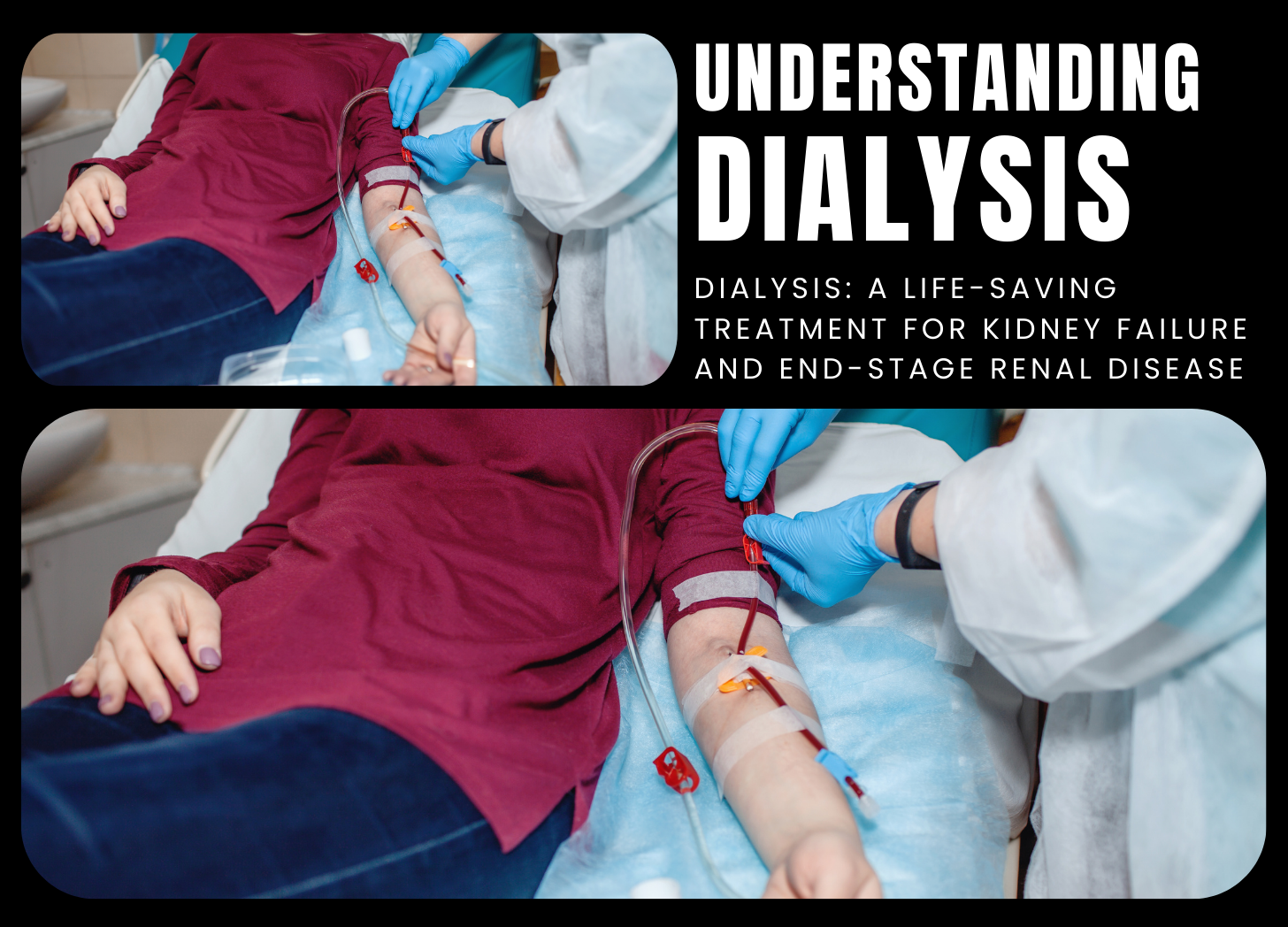Contact Us
Contact Us

Dialysis is a life-saving medical treatment for individuals with kidney failure or end-stage renal disease (ESRD), conditions where the kidneys can no longer adequately filter waste materials and excess fluid from the blood. This critical therapy helps maintain fluid and electrolyte balance, remove toxins and metabolic waste products, and regulate blood pressure, significantly enhancing the quality of life and extending the longevity of those with severe renal disease.
There are two primary methods of dialysis: hemodialysis and peritoneal dialysis.
Hemodialysis involves using a machine called a dialyzer to filter blood outside of the body. This process removes waste products and excess fluid before returning the purified blood to the body. Hemodialysis is typically performed in a dialysis center multiple times per week and requires the creation of a vascular access, such as an arteriovenous fistula or graft, to facilitate blood flow during treatment.
Peritoneal dialysis utilizes the peritoneum, a membrane lining the abdominal cavity, as a natural filter for waste removal. A sterile dialysis solution is introduced into the abdominal cavity via a catheter, where it absorbs waste materials and excess fluid from the bloodstream. After a set period, the solution is drained, taking the waste products with it. Peritoneal dialysis can often be performed at home, offering greater flexibility and independence for patients.
Dialysis is indicated for severe renal dysfunction (a glomerular filtration rate < 15 mL/min/1.73 m²), symptoms of uremia (e.g., nausea, vomiting, lethargy, confusion), electrolyte imbalances, fluid overload, and uncontrolled hypertension. It can be used as a short-term solution for acute kidney injury or as a long-term treatment for chronic kidney disease.
While dialysis is life-saving, it carries certain risks and limitations. Complications can include infections at the vascular access site, blood clots, bleeding, electrolyte imbalances, fluid overload or dehydration, and cardiovascular issues. Moreover, dialysis treatments can be time-consuming and impact quality of life, requiring patients to adhere to dietary restrictions, fluid intake limitations, and medication regimens.
Dialysis is a crucial therapy for individuals with kidney failure or end-stage renal disease, enabling the removal of waste materials and excess fluid from the blood when the kidneys can no longer perform these functions effectively. Although it can significantly improve quality of life and extend survival, the decision to undergo dialysis should be made carefully, considering the potential risks, benefits, and alternatives in consultation with healthcare professionals.
Post a Comment